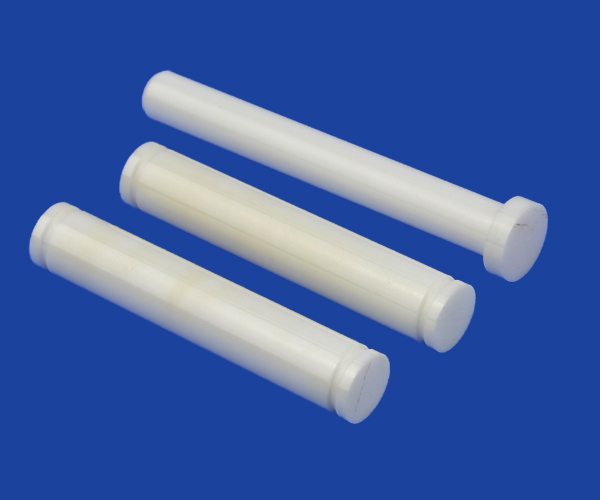
 Moble: +86 18122974730
Moble: +86 18122974730 Phone: +86 746 3386888
Phone: +86 746 3386888 Email: admin@cerampart.com
Email: admin@cerampart.com Skype: +86 18122974730
Skype: +86 18122974730 Wechat: +86 18122974730
Wechat: +86 18122974730
As engineers, we apply our skills, knowledge and experience to produce the best looking and most accurate ceramic parts.We are very proud of the ceramic parts we make and we want others to see the pride in the finished ceramic parts.But what do we do when we don't get the results we want?In terms of ceramic parts size, the parts meet the blueprint specifications, but the surface finish and overall appearance of the ceramic parts are not ideal.When this happens, we need to go back to basics and make sure we use what we know to be the best ceramic parts processing methods.
We need to look at something like a ceramic part, a fixture, and make sure that it's sturdy and that it doesn't promote harmonic problems or vibrations during the ceramic part processing.We need to make sure that we don't use unnecessarily long tools that can easily be diverted or increase the chances of chatter.In high-speed processes, we need to ensure that we use a quality-balanced tool that has been rated according to the programming RPM used.But what if all of the above is good?

1. Control chip: chip evacuation is a key factor for good surface finish.The control chip is probably the first thing you should consider.If the chips produced come into contact with the ceramic parts during the processing of the ceramic parts, or if you are re-cutting the chips, it is likely to affect the surface finish of the ceramic parts in a negative way.Consider the possibility of changing the chip breaker style you are using to help disassemble the chip for better control.
While both air and coolant are good options for controlling chip removal, pay attention to the coolant.Coolant should be avoided during intermittent cutting.Thermal cracking on the cutting edge can occur...Due to intermittent heating and rapid cooling of the cutting edges......And it can cause the blade to fail prematurely, or at least start to affect your surface finish due to overstress on the cutting edge and failure.
2. Increase speed: This is especially true when using carbide cutting tools.The increased speed will ensure that the material is in contact with the tip for a shorter time......This reduces edge accumulation on the tool, which can lead to poor surface finish of ceramic parts.Increasing the rake Angle of the cutting tool also helps reduce and control edge piling.
3. Use the right tip radius: A larger tip radius will allow for faster speeds.The inserts can be fed at about half the TNR per revolution and still produce good results.If this TNR to IPR ratio is exceeded, the tool will create more of a "linear" surface finish for ceramic parts than the glossy smooth surface you want.Therefore, the larger the TNR, the faster it can accommodate the feed rate and still produce the desired results.However, using very large TNR can produce flutter - reducing cutting pressure - so be careful and consider the speed required to cut the material - use a TNR tool that meets your needs.
It's also worth mentioning that using a larger tip radius means you have to leave more material for the finish pass.To ensure that the tool works properly, you must set the TNR equal to or greater than TNR in order to complete the removal of the tool.
If you encounter chatter around the corner, you may want to try smaller TNR.Always use a TNR smaller than the angular radius you are cutting - so you can "form" the desired radius - especially on finishing tools.This will help reduce cutting pressure and eliminate chatter.
When milling, try to use an external fillet or ball end mill instead of a flat end mill.Something with a rounded radius will give you a higher finish at sharp corners and will definitely help extend tool life.
4. Try wiper insertion: as much as possible.The wiper insert has a small flat area adjacent to the radius of the tip.This flat surface actually "wips" the finish as the tool is fed along the workpiece and helps eliminate the linear finish that might be encountered with a faster feed rate -- this allows for the use of a smaller TNR to help control flutter.
5. Increase the lead Angle of the tool.Higher lead angles and positively inclined blades produce a better surface finish than tools with shallower cutting angles.For example, a face mill with a 45° cutting Angle will produce a better surface finish than a face mill with a 90° cutting Angle.
6. Eliminate stagnation and pause: every time the tool stops moving on contact with the surface of the ceramic part, it leaves a trace.Change the process if necessary, but try to ensure that the cutter never stops or hesitates during cutting.
Ceramics quality Ceramics Process Ceramice after-sale Customer witness Patent Certificate
Ceramic Flange Ceramic BushingS Ceramic PlungerS Ceramic Pump ValveS